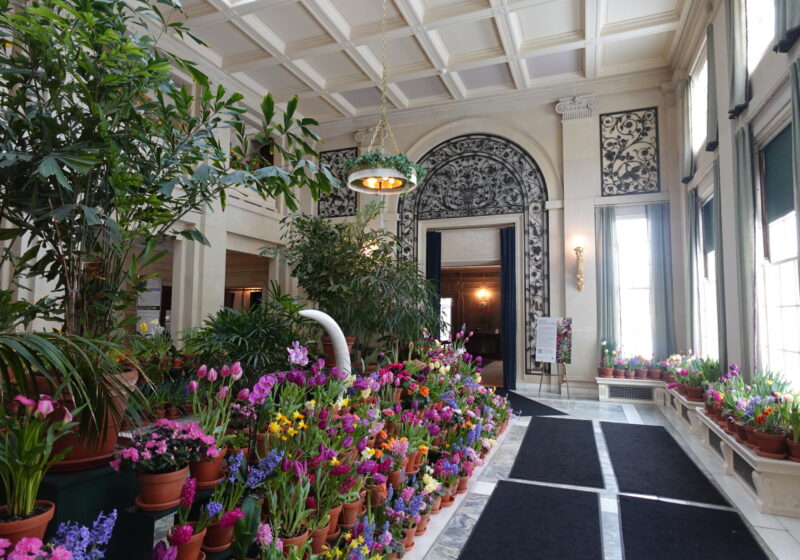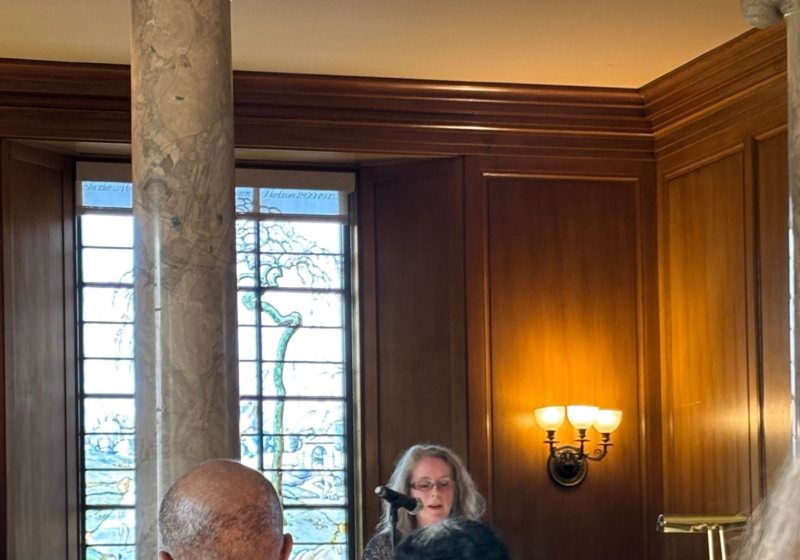The Monroe County Paranormal Investigators (MCPI) met in the parking lot of the Memorial Art Gallery on Nov. 5, checking their batteries and devices one last time before entering the museum.
“Remember your basics,” MCPI founder Rob Pistilli said over the phone to his team. “It’s a big building. Make sure you’re verifying everything you can.”
The Memorial Art Gallery (MAG) reached out to the MCPI due to a growing number of stories and strange sightings taking place throughout the 103-year-old building.
MAG Facilities manager Deborah Foster says that one reccurring story includes a ghostly woman walking around the Lockhart gallery. Others have heard rumors of a man wearing a Facilities uniform walking around at night. The twist: these stories began years before Facilities workers actually had a uniform.
Each group of paranormal investigators was joined by a member of the MAG faculty and a member of security staff.
MCPI case manager Brian Cardilli, a self-described skeptic, explained to the curators that the real goal of the night was “to not break anything” while asking questions out loud in rooms that demonstrated any activity.
“It seems silly,” Cardilli said to the MAG representatives. “[But] every once in a while, you get an answer back.”
Investigators brought flashlights, voice recorders, and thermometers.
“One of the ways that we can see what’s going on around us is through temperature, whether it spikes or drops significantly,” Tom Gottschalk, one of the MCPI investigators, said. “If it happens, you want to be able to document it.”
Their toolkits also included K-II meters, known as “Safe Range EMFs”—small devices with multiple lights on them, indicating different strength levels of surrounding electromagnetic radiation sources.
K-II meters are sensitive. Each team member turned their phone on airplane mode to avoid confounding the data.
While climbing through the rafts of the MAG attic, K-II levels were low, due to our distance from anything electronic. In the basement, there was an instant spike in levels due to the power generators.
Other than one particular occurrence within my team, the K-II meters’ reactions all had logical explanations.
“Is anybody here with us tonight?” Brian asked, placing his K-II meter on the ground as investigators circled the Fountain Court on the MAG’s second floor.
Security had turned off the lights on the floor, except for one main spotlight off to the side, giving the team only enough light to avoid harming the art.
“A lot of what we do is just standing around,” Gottschalk said. “And waiting.” He had left his voice recorder on in the Welt gallery.
The group moved to the far opposite corner next to the 18th century Italian baroque organ, which the MAG has on loan from the Eastman School of Music. Students often visit and practice on the organ during museum hours.
After a few moments of asking questions, including “How old are you?” and “Did you used to work here?,” all 30 lights in the Adams Gallery turned on for a moment. Then they shut off.
Some lights in the MAG are motion-sensitive.
The lights in the Adams Gallery, however, require a key for the switch to turn on. The security member in possession of that key was on the opposite side of the gallery at the moment the lights went on.
Gottschalk examined the lighting and the switch. Security claims to have never experienced faulty lighting with this particular system. They additionally comment that had one bulb been malfunctioning, it would have flickered alone.
Moving into the fountain court, two members of the team heard a loud sliding noise in the Welt Gallery. No one answered Gottschalks’ call and nothing was found upon examination, but Gottschalks’ recorder should have captured the noise.
Exploring the downstairs storage rooms, Gottschalks heard a strange voice down the hall.
Cardilli began asking questions.
At first, there was no response.
“Can you give me a hand?” Cardilli asked. The air compressor in the room next him then turned itself on.
Security explained that the compressor does not normally activate itself, but if it had, then there would have been a sound of releasing air first, due to the size of the compressor.
Inside the room, Cardilli continued to ask questions.
The team felt a noticeable chill besides the compressor. Gottschalks measured that it was nearly three degrees Fahrenheit colder than the rest of the room.
The storage room has no vents or air conditioning. Gottschalks checked for any other sources of air, but found none.
Security turned the machine off. Gottschalks waited a moment, then waived his K-II meter around where the temperature had dropped. The device’s lights flickered on and off in response.
“Part of what we’re doing here is proving something unprovable,” Gottschalk said.
At the end of the investigation, members of each team took their cameras and recording devices back, and checked to make sure they had not been turned off.
MCPI will reveal all of their findings in the MAG auditorium on Dec. 8.





